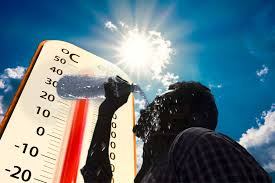From Droughts to Blackouts: The Wider Effects of Excessive Heat
Introduction
Excessive heat is more than just an uncomfortable weather event—it is a growing global challenge with far-reaching consequences. Beyond posing risks to human health, extreme heat waves can disrupt entire ecosystems, weaken economies, and strain public infrastructure. From prolonged droughts to widespread power outages, the ripple effects of excessive heat highlight the urgent need for awareness and preparedness.
Excessive Heat and Drought
One of the most significant outcomes of prolonged excessive heat is drought. High temperatures increase evaporation rates, drying up rivers, lakes, and reservoirs faster than they can be replenished. Crops suffer, livestock struggle, and water supplies become dangerously limited. Farmers face economic losses, and communities dependent on agriculture often experience food insecurity. Droughts also raise the risk of wildfires, creating further damage to land, property, and human health.
Blackouts and Energy Strain
During excessive heat waves, energy demand soars as people turn to air conditioning and cooling systems. This surge in electricity consumption places heavy stress on power grids. In many regions, this can lead to rolling blackouts or complete power outages. Without power, homes lose cooling systems, hospitals face risks to patient safety, and businesses experience financial losses. The cycle of high demand and failing infrastructure highlights how closely heat is tied to energy security.
Health Impacts of Droughts and Blackouts
When excessive heat leads to droughts and blackouts, the health risks multiply. Drought reduces access to clean water, making dehydration more likely. It also worsens air quality, as dry conditions and wildfires release harmful particles into the atmosphere. During blackouts, vulnerable populations—such as older adults, children, and people with chronic illnesses—are left without access to lifesaving cooling systems. Together, these conditions magnify the dangers of extreme heat.
Economic and Environmental Consequences
Excessive heat creates a domino effect on local and global economies. Farmers lose crops, raising food prices and affecting supply chains. Energy companies face higher operational costs to meet demand. Tourism, another major economic driver, suffers when natural landscapes deteriorate and outdoor conditions become unsafe. Environmentally, ecosystems are disrupted as plants and animals struggle to adapt to hotter, drier climates.
Community Preparedness and Solutions
While the challenges of excessive heat are immense, communities can take steps to reduce the risks:
- Investing in resilient infrastructure: Updating power grids and water systems to handle extreme conditions.
- Promoting water conservation: Encouraging households and businesses to use water more efficiently.
- Expanding green spaces: Trees and parks not only cool cities but also help retain moisture.
- Public awareness campaigns: Educating communities on how to respond to heat alerts and prevent health emergencies.
- Renewable energy adoption: Solar and wind energy reduce reliance on overburdened power systems during peak demand.
Conclusion
Excessive heat is not an isolated problem—it fuels a chain of challenges, from droughts and wildfires to blackouts and economic losses. Its wider effects touch every aspect of daily life, threatening health, safety, and long-term sustainability. By investing in resilience and prioritizing preparedness, communities can mitigate these impacts and build a safer future. For ongoing updates on health, wellness, and climate-related challenges, yeemanews.com provides trusted resources to keep individuals and communities informed and ready.




